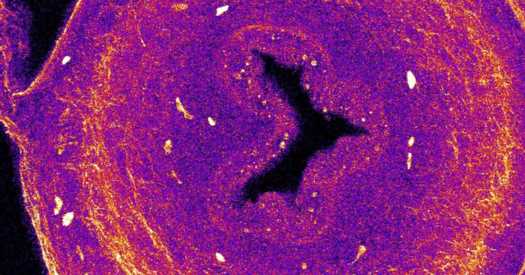In the grayscale of a laboratory video, the little tubes squirm. They pulse as waves of contraction travel along their length — they almost seem to dance as the squeezing stretches them rhythmically. And, curiously, they grow.
These tubes are individual lengths of intestine, taken from a chicken embryo. And what the videos and other measurements demonstrate, according to a paper published Wednesday in the Journal of the Royal Society Interface, is that this pulsing movement is crucial to the gut’s development. It starts tiny, then elongates to become a wonder tube yards long, with a vast surface area that absorbs nutrients effectively.
It’s well-known among researchers trying to grow model organs in lab dishes, that guts are tricky. Cells that are cultured in a dish to become gut tissue will wad up, rather than forming the tube they make in the body, if nothing is touching or moving them.
“Usually the result is a spherical ball of cells,” said Nicolas Chevalier, a biophysics researcher at Paris Diderot University. “It does not have the classical, elongated, cylindrical shape.”
Researchers already knew that, very early in an embryo’s growth, the muscle surrounding the gut starts to pulse rhythmically, eventually becoming the peristaltic motion that moves food from the stomach to the colon. Dr. Chevalier and his colleagues were curious to see what encouraging this motion in lab-grown gut would do. So they designed a series of experiments using chicken embryos, a common model organism in the study of embryonic development.
Early on in developing chickens, as in humans, the gut stages an impressive jailbreak from the rest of the embryo. Through a large hole, it pours out and settles down for a period of growth outside the body, before eventually being drawn back in. The scientists studied these extruded guts, which were no more than about an inch long, from chicken embryos.
First, Dr. Chevalier attached small weights to one end of some guts and grew them vertically, alongside others without weights, to see what applying gentle force would do over time.
“The organs we pulled on grew a lot, by a factor of two, in just two days,” he said. “The ones we didn’t pull on did not.”
Then, they compared the growth of guts before and after the beginning of strong muscular contractions, which in chickens start sometime after a week of gestation. Guts with less pulsing grew thicker but not much longer, whereas the twitching intestines clearly stretched.
The researchers halted the growth of some older guts by adding a drug that inhibits muscular contractions, and also by slicing the tubes open, which stopped the circular squeezing motion.
The study suggests that the gentle pulsing of the developing gut is key to its elongation, much as squeezing on a tube of toothpaste will cause the extruded toothpaste to elongate. Dr. Chevalier and colleagues hope to see if this information will help in developing better dish-grown models of the gut, ones that will grow into long tubes.
They plan to continue investigating the growth of the embryonic gut, not just in chickens but in mice, to understand how motion plays a role in shaping the organ.
“In every square inch of an embryo, there’s tons of things happening,” Dr. Chevalier said. “You never get bored.”
Source: Read Full Article
